InTUNE












The Music of ABBA
June 15
Jurassic Park in Concert
June 22 & 23
The Music of The Rolling Stones
June 28 & 29
Ain’t No Mountain High Enough: The Music of Motown
September 28 & 29
Opening Weekend: Dvořák’s New World
October 4, 5 & 6
Trifonov in Concert
October 10
Dvořák’s Violin Concerto
October 12 & 13
Hansel and Gretel & Don Quixote
November 1, 2 & 3
It Don’t Mean a Thing: Swingin’ Uptown Classics with Byron Stripling
A Viennese Waltz Christmas
December 7 & 8
Yo-Yo Ma in Concert
December 9
Very Merry Pops
December 12, 14 & 15
Holly Jolly Holiday
December 14
S Handel's Messiah
December 20, 21 & 22
Pink Martini with China Forbes: 30th Anniversary Season
January 3, 4 & 5
November 8, 9 & 10 S
Clap your hands, say yeah! The Great American Music Adventure
November 9
Michael Tilson Thomas Conducts Beethoven 9
November 14
Disney Tim Burton’s The Nightmare Before Christmas in Concert
November 16 & 17
Bach, Mozart & Brahms
November 23 & 24
Thanksgiving Weekend: Beethoven’s Emperor Concerto
November 29, 30 & December 1
An Eschenbach & Bruckner
Birthday Celebration
January 11 & 12
Harry Potter and the Prisoner of Azkaban™ in Concert
January 18 & 19
Beethoven’s Violin Concerto & Tchaikovsky
January 24, 25 & 26
Viva Italia! Opera Beyond Words
February 7 & 9
Duke Bluebeard’s Castle
February 15 & 16
Star Wars: The Empire Strikes Back in Concert
February 21 & 22
007: James Bond Forever
February 28, March 1 & 2
Sherlock Holmes and the Case of the Missing Maestro
March 1
Hilary Hahn Plays Brahms
March 7, 8 & 9
Korngold’s Violin Concerto & Cinderella
March 14, 15 & 16
Rachmaninoff’s Rhapsody & The Little Mermaid
March 21, 22 & 23
Showstoppers! Celebrating Iconic Women of Broadway
April 4, 5 & 6
La Flor: The Music of Selena
April 12 & 13
Sibelius 5 & Stravinsky
April 18 & 19
Cirque Rocks!
April 25, 26 & 27
Cirque For Kids
April 26
Beethoven 7 & Mozart
May 1, 3 & 4
Trumpet Brilliance & Boléro
May 9, 10 & 11
Stayin’ Alive: The Bee Gees & Beyond
May 16, 17 & 18
Bruce Liu Plays Chopin
May 23, 24 & 25
Juraj Valčuha Conducts Mahler 3
May 30, 31 & June 1
John Williams & Steven Spielberg: Movie Magic
June 6, 7 & 8
Houston Symphony Music Director Juraj Valčuha is recognized for his effortless expressiveness and depth of musicianship. With sharp baton technique and natural stage presence, the impressive ease of his interpretations translate even the most complex scores into immersive experiences.
Before joining the Houston Symphony in June 2022, Juraj was Music Director of the Teatro di San Carlo, Naples, from 2016 to 2022 and first guest conductor of the Konzerthausorchester Berlin. He was Chief Conductor of the Orchestra Sinfonica Nazionale della Rai from 2009 to 2016.
The 2005–06 Season marked the start of his international career on the podium of the Orchestre National de France followed by remarkable debuts in the United Kingdom with the Philharmonia London, in Germany with the Munich Philharmonic, in the United States with the Pittsburgh Symphony, and in Italy with Puccini's La bohème in Bologna.
He has since led the Leipzig Gewandhaus Orchestra, Dresden Staatskapelle, Munich Philharmonic, Berlin Philharmonic, Swedish Radio Symphony, Amsterdam Royal Concertgebouw, Rotterdam Philharmonic, Orchestre de Paris, Maggio Musicale in Florence, Orchestra dell'Accademia Nazionale di Santa Cecilia
Music
Director Roy and Lillie Cullen Chair
Rome, Milan's Filarmonica della Scala, Montréal Symphony, and the NHK and Yomiuri orchestras in Tokyo.
He enjoys regular collaborations with the Minnesota Orchestra, New York Philharmonic, Pittsburgh Symphony, and San Francisco Symphony.
International touring with the Orchestra Sinfonica della Rai took them to the Musikverein in Vienna and Philharmonie in Berlin, Cologne, Düsseldorf, Zurich, Munich, to the Enesco Festival in Bucharest, and the Abu Dhabi Classics. With the Konzerthausorchester Berlin, he visited Riga, Vilnius, and Tallinn to mark the 100 th anniversary of the Baltic nations.
In Europe, he is acclaimed on the podium of the Munich Philharmonic, the NDR Hamburg and Frankfurt Radio orchestras, as well as the Vienna Symphony, Czech Philharmonic, Orchestre National de France, Orchestre de Paris, BBC Symphony and Philharmonia London, and the Swedish Radio Orchestra.
Juraj champions the compositions of living composers and aims to program contemporary pieces in most of his concerts. He has conducted world premieres, including Christopher Rouse’s Supplica with the Pittsburgh Symphony, Steven Mackey’s violin concerto with Leila Josefowicz and the BBC
Symphony in Manchester, and Nico Muhly’s Bright Idea with the Houston Symphony. In 2005, he conducted, in the presence of the composer, Steve Reich’s Four Seasons at the Melos-Ethos Festival in Bratislava. Other composers he has supported and continues to follow with interest are Bryce Dessner, Steven Stucky, Andrew Norman, James MacMillan, Luca Francesconi, Anna Thorvaldsdottir, Anna Clyne, and Jessie Montgomery, among others.
Including his engagements in Houston, the 2023–24 Season took him to the Pittsburgh, San Francisco, Chicago, and Minnesota Orchestras as well as to the Yomiuri Nippon Orchestra in Tokyo. On the European stage, he performed Fanciulla del West and Tristan and Isolde at the Bavarian State Opera and at the Deutsche Oper Berlin, Jenufa at the Opera di Roma, and Salome at the Semperoper in Dresden. He led concerts with the RAI Orchestra, the Orchestra dell'Accademia di Santa Cecilia, the Orchestre National de France, the NDR, SWR, and the Bamberg Symphony, among others.
Born in Bratislava, Slovakia, Juraj studied composition and conducting in his birth place, then at the conservatory in St. Petersburg (with Ilya Musin), and finally, at the Conservatoire Supérieur de la Musique in Paris.

Juraj Valčuha
Music Director
Roy and Lillie Cullen Chair
FIRST VIOLIN
Yoonshin Song, Concertmaster
Max Levine Chair
Eric Halen, Co-Concertmaster
Ellen E. Kelley Chair Boson Mo, Assistant Concertmaster
Qi Ming, Assistant Concertmaster Fondren Foundation Chair
Marina Brubaker
Tong Yan
MiHee Chung
Sophia Silivos
Rodica Gonzalez
Ferenc Illenyi
Si-Yang Lao
Kurt Johnson*
Christopher Neal
Sergei Galperin
SECOND VIOLIN
MuChen Hsieh*, Principal
Teresa Wang+, Associate Principal
Amy Semes
Annie Kuan-Yu Chen
Mihaela Frusina
Jing Zheng
Tianjie Lu
Anastasia Ehrlich
Tina Zhang*
Yankı Karataş
Hannah Duncan
Tianxu Liu+
Samuel Park+
VIOLA
Joan DerHovsepian, Principal
Wei Jiang, Acting Associate Principal
Sheldon Person
Fay Shapiro
Keoni Bolding
Samuel Pedersen
Paul Aguilar
Elizabeth Golofeev+
Meredith Harris+
Yvonne Smith+
CELLO
Brinton Averil Smith, Principal
Janice H. and Thomas D. Barrow Chair
Christopher French, Associate Principal
Anthony Kitai
Louis-Marie Fardet
Jeffrey Butler
Maki Kubota
Xiao Wong
Charles Seo
Jeremy Kreutz
COMMUNITY-EMBEDDED MUSICIAN
Lindsey Baggett, Violin
ASSISTANT LIBRARIANS
Hae-a Lee
Anna Thompson
Steven Reineke, Principal POPS Conductor
Andrés Orozco-Estrada, Conductor Laureate
Gonzalo Farias, Assistant Conductor
DOUBLE BASS
Robin Kesselman, Principal
Timothy Dilenschneider, Associate Principal
Eric Larson
Andrew Pedersen
Burke Shaw
Donald Howey
Avery Weeks
Ryan Avila+
FLUTE
Aralee Dorough, Principal
General Maurice Hirsch Chair
Matthew Roitstein*, Associate Principal
Judy Dines, Acting Associate Principal
Kathryn Ladner
PICCOLO
Kathryn Ladner
OBOE
Jonathan Fischer, Principal
Lucy Binyon Stude Chair
Anne Leek, Associate Principal
Colin Gatwood
Adam Dinitz
ENGLISH HORN
Adam Dinitz
Barbara and Pat McCelvey Chair
CLARINET
Mark Nuccio, Principal
Bobbie Nau Chair
Thomas LeGrand, Associate Principal
Christian Schubert
Alexander Potiomkin
E-FLAT CLARINET
Thomas LeGrand
BASS CLARINET
Alexander Potiomkin, Tassie and Constantine S. Nicandros Chair
BASSOON
Rian Craypo, Principal
Isaac Schultz, Associate Principal
Elise Wagner
Adam Trussell
CONTRABASSOON
Adam Trussell
STAGE PERSONNEL
Stefan Stout, Stage Manager
José Rios, Assistant Stage Manager
Nicholas DiFonzo, Head Video Engineer
Justin Herriford, Head Audio Engineer
Connor Morrow, Head Stage Technician
Giancarlo Minotti, Audio Production Manager
HORN
William VerMeulen, Principal
Mr. and Mrs. Alexander K. McLanahan
Endowed Chair
Robert Johnson, Associate Principal
Nathan Cloeter, Assistant Principal/Utility
Brian Thomas
Brian Mangrum
Ian Mayton
Barbara J. Burger Chair
TRUMPET
Mark Hughes, Principal
George P. and Cynthia Woods
Mitchell Chair
John Parker, Associate Principal
Robert Walp, Assistant Principal
Richard Harris
TROMBONE
Bradley White, Acting Principal
Ryan Rongone+
Phillip Freeman
BASS TROMBONE
Phillip Freeman
TUBA
Dave Kirk, Principal
TIMPANI
Leonardo Soto, Principal
Matthew Strauss, Associate Principal
PERCUSSION
Brian Del Signore, Principal
Mark Griffith
Matthew Strauss
HARP
Allegra Lilly, Principal
KEYBOARD
Scott Holshouser, Principal
LIBRARIAN
Luke Bryson, Principal
*on leave + contracted substitute

SENIOR MANAGEMENT GROUP
John Mangum, Executive Director/CEO, Margaret Alkek Williams Chair
Elizabeth S. Condic, Chief Financial Officer
Vicky Dominguez, Chief Operating Officer
DEVELOPMENT
Lauren Buchanan, Development Communications Manager
Alex Canales, Development Ticket Concierge
Jessie De Arman, Development Associate, Gifts and Records
Timothy Dillow, Senior Director, Development
Amanda T. Dinitz, Senior Major Gifts Officer
Vivian Gonzalez, Development Officer
Kamra Kilmer, Development Gift Officer
Karyn Mason, Development Officer
Hadia Mawlawi, Senior Associate, Endowment and Planned Giving
Meghan Miller, Special Events Associate
Emilie Moellmer, Annual Fund Manager
Megan Mottu, Development Officer
Tim Richey, Director, Individual Giving
Sherry Rodriguez, Corporate Relations Manager & Board Liaison
Katie Salvatore, Development Officer
Christine Ann Stevens, Senior Director, Development
Lena Streetman, Manager, Research and Development Operations
Stacey Swift, Director, Special Events
Sarah Thompson, Donor Stewardship Manager
Christina Trunzo, Director, Foundation Relations
Alexa Ustaszewski, Major Gifts Officer
EDUCATION | COMMUNITY ENGAGEMENT
Olivia Allred, Education Manager
Allison Conlan, Director, Education and Community Engagement
FINANCE | ADMINISTRATION | IT | HR
José Arriaga, Systems Engineer
Henry Cantu, Finance Accountant
Kimberly Cegielski, Staff Accountant
Joel James, Director of Human Resources
Tanya Lovetro, Director of Budgeting and Financial Reporting
Jane Orosco, Database Administrator
Morgana Rickard, Controller
Gabriela Rivera, Senior Accountant
Pam Romo, Office Manager/HR Coordinator
Lee Whatley, Senior Director, IT and Analytics
Mark Bailes, Marketing Revenue Manager
Olivia Cantrell, Content Marketing Coordinator
David Early, Marketing and External Relations Assistant
Heather Fails, Manager, Ticketing Database
Kathryn Judd, Director, Marketing
Priya Kurup, Senior Associate, Group Sales
Yoo-Ell Lee, Graphics and Media Designer
Fiona Legesse-Sinha, Graphic Design Manager
Ciara Macaulay, Creative Director
Mariah Martinez, Email Marketing Coordinator
Freddie Piegsa, Patron Experience Coordinator
Eric Skelly, Senior Director, Communications
Alex Soares, Senior Director, Marketing
Christian Sosa, Web Experience Director
Ashlan Walker, Manager, Patron Services
Jenny Zuniga, Director, Patron Services
Stephanie Alla, Associate Director of Artistic Planning
Juan Pablo Brand, Artistic Intern
Becky Brown, Associate Director, Orchestra Personnel
Suré Eloff, Chorus Manager
Michael Gorman, Director, Orchestra Personnel
Julia Hall, Interim Director, Chorus
Adrian Hernandez, Artistic Operations Intern
Hae-a Lee, Assistant Librarian
Giancarlo Minotti, Audio Production Manager
Lauren Moore, Associate Director, Concert Media and Production
José Rios, Assistant Stage Manager
Brad Sayles, Senior Recording Engineer
Claudia Schmitz, Artistic Coordinator and Assistant to the Music Director
Stefan Stout, Stage Manager
Anna Thompson, Assistant Librarian
Meredith Williams, Associate Director, Concert Operations and Production
Rebecca Zabinski, Senior Director, Artistic Planning
Barbara J. Burger President
Janet F. Clark Chair
John Rydman Immediate Past President
Mike S. Stude Chair Emeritus
Paul Morico General Counsel
Barbara McCelvey Secretary
John Mangum^ Executive Director/CEO
Margaret Alkek Williams Chair
Jonathan Ayre Chair, Finance
Brad W. Corson Chair, Governance & Leadership
Carey Kirkpatrick Chair, Marketing & Communications
Evan B. Glick Chair, Popular Programming
Barbara McCelvey Chair, Development
Sippi Khurana, M.D. Chair, Education & Community Partnerships
Jonathan Ayre
Gary Beauchamp
Eric Brueggeman
Bill Bullock
Barbara J. Burger
Mary Kathryn Campion, Ph.D.
John Cassidy, M.D.
Janet F. Clark
Lidiya Gold
Claudio Gutiérrez
Rick Jaramillo
David J. M. Key
Sippi Khurana, M.D.
Carey Kirkpatrick
Mary Lynn Marks Chair, Volunteers & Special Events
Robert Orr Chair, Strategic Planning
John Rydman Chair, Artistic & Orchestra Affairs
Jesse B. Tutor Chair, Audit
Steven P. Mach ^ Immediate Past Chair
Bobby Tudor^ At-Large Member
Heidi Rockecharlie^ President, Houston Symphony League
James H. Lee^
President, Houston Symphony Endowment
Juraj Valčuha^ Music Director, Roy and Lillie Cullen Chair
Rian Craypo Musician Representative
Joan DerHovsepian^ Musician Representative
Mark Hughes^ Musician Representative
Mark Nuccio^ Musician Representative
Sherry Rodriguez^ Assistant Secretary ^Ex-Officio
Cindy Levit
Isabel Stude Lummis
Cora Sue Mach **
Rodney Margolis**
Jay Marks *
Mary Lynn Marks
Elissa Martin
Barbara McCelvey
Paul R. Morico
Robert Orr
Chris Powers
John Rydman**
Ed Schneider
Justin Stenberg
William J. Toomey II
Bobby Tudor **
Betty Tutor **
Jesse B. Tutor **
Gretchen Watkins
Robert Weiner
Margaret Alkek Williams **
EX-OFFICIO
Brad W. Corson
Rian Craypo
Joan DerHovsepian
Evan B. Glick
Mark Hughes
James H. Lee
Steven P. Mach
John Mangum
Mark Nuccio
Heidi Rockecharlie
Sherry Rodriguez
Juraj Valčuha
David J. Beck
James M. Bell Jr.
Carrie Brandsberg-Dahl
Nancy Shelton Bratic
Terry Ann Brown**
Lindsay Buchanan
Ralph Burch
Dougal Cameron
John T. Cater**
Robert Chanon
Heaven Chee
Michael H. Clark
Virginia Clark
Brad W. Corson
Andrew Davis, Ph.D.
Denise Davis
Manuel Delgado
Allen Deutsch, M.D.
Tracy Dieterich
Joan Duff
Connie Dyer
Jeffrey B. Firestone
Eugene A. Fong
Aggie L. Foster
Julia Anderson Frankel
Ronald G. Franklin
Carolyn Gaidos
Evan B. Glick
Lori Harrington
Jeff Hiller
Grace Ho
Gary L. Hollingsworth
Brian James
Dawn James
I. Ray Kirk, M.D.
David Krieger
Kenny Kurtzman
Steven P. Mach
Michael Mann, M.D.
Jack Matzer
PAST PRESIDENTS OF THE HOUSTON SYMPHONY SOCIETY
Mrs. Edwin B. Parker
Miss Ima Hogg
Mrs. H. M. Garwood
Joseph A. Mullen, M.D.
Joseph S. Smith
Walter H. Walne
H. R. Cullen
Gen. Maurice Hirsch
Charles F. Jones
Fayez Sarofim
John T. Cater
Richard G. Merrill
Ellen Elizardi Kelley
John D. Platt
E.C. Vandagrift Jr.
J. Hugh Roff Jr.
PAST PRESIDENTS OF THE HOUSTON SYMPHONY LEAGUE
Miss Ima Hogg
Mrs. John F. Grant
Mrs. J. R. Parten
Mrs. Andrew E. Rutter
Mrs. Aubrey Leno Carter
Mrs. Stuart Sherar
Mrs. Julian Barrows
Ms. Hazel Ledbetter
Mrs. Albert P. Jones
Mrs. Ben A. Calhoun
Mrs. James Griffith Lawhon
Mrs. Olaf LaCour Olsen
Mrs. Ralph Ellis Gunn
Mrs. Leon Jaworski
Mrs. Garrett R. Tucker Jr.
Mrs. M. T. Launius Jr.
Mrs. Thompson McCleary
Mrs. Theodore W. Cooper
Mrs. Allen W. Carruth
Mrs. David Hannah Jr.
Mary Louis Kister
Mrs. Edward W. Kelley Jr.
Mrs. John W. Herndon
Mrs. Charles Franzen
Mrs. Harold R. DeMoss Jr.
Mrs. Edward H. Soderstrom
Mrs. Lilly Kucera Andress
Ms. Marilou Bonner
Mrs. W. Harold Sellers
Mrs. Harry H. Gendel
Mrs. Robert M. Eury
Mrs. E. C. Vandagrift Jr.
Mrs. J. Stephen Marks
Terry Ann Brown
Dougal A. Cameron
Janet F. Clark
Nancy Martin
Jackie Wolens Mazow
Alexander K. McLanahan**
Marilyn Miles
Aprill Nelson
Leslie Nossaman
Tim Ong
Edward Osterberg Jr.
Zeljko Pavlovic
Gloria G. Pryzant
Miwa Sakashita
Ted Sarosdy
Andrew Schwaitzberg
Helen Shaffer**
Robert B. Sloan, D.D., Theol.
Jim R. Smith
Miles O. Smith**
Quentin Smith
Anthony Speier
Tina Raham Stewart
Robert M. Hermance
Gene McDavid
Janice H. Barrow
Barry C. Burkholder
Rodney H. Margolis
Jeffrey B. Early
Michael E. Shannon
Ed Wulfe
Nancy Strohmer
Mary Ann McKeithan
Ann Cavanaugh
Mrs. James A. Shaffer
Lucy H. Lewis
Catherine McNamara
Shirley McGregor Pearson
Paula Jarrett
Cora Sue Mach
Kathi Rovere
Norma Jean Brown
Barbara McCelvey
Lori Sorcic Jansen
Nancy B. Willerson
Jane Clark
Nancy Littlejohn
Donna Shen
Barbara McCelvey
Mike S. Stude **
Shirley W. Toomim
Margaret Waisman, M.D.
Fredric A. Weber
Vicki West
Steven J. Williams
David J. Wuthrich
Ellen A. Yarrell
Robert Yekovich
EX-OFFICIO
John Steven Cisneros, Ed.D.
Juan Zane Crawford, Ph.D.
Kirby Lodholz
Frank F. Wilson IV
**Lifetime Trustee *Deceased
Jesse B. Tutor
Robert B. Tudor III
Robert A. Peiser
Steven P. Mach
Janet F. Clark
John Rydman
Dr. Susan Snider Osterberg
Dr. Kelli Cohen Fein
Vicki West
Mrs. Jesse Tutor
Darlene Clark
Beth Wolff
Maureen Higdon
Fran Fawcett Peterson
Leslie Siller
Cheryl Byington
Mary Fusillo
*Kellen Gray, conductor
0:09 COPLAND – An Outdoor Overture
0:28 GERSHWIN/BOWEN – Catfish Row (Symphonic Suite in Five Parts) from Porgy and Bess
1. Catfish Row: Allegro con brio
2. Porgy Sings: Allegro
3. Fugue: Sempre agitato
4. Hurricane: Adagio
5. Good mornin', Sistuh!: Moderato commodo--Allegretto
INTERMISSION
0:30 PRICE – Symphony No. 3 in C minor
I. Andante
II. Andante ma non troppo
III. Juba: Allegro
IV. Scherzo. Finale: Allegro
*Houston Symphony debut


Friday, July 12
THANK YOU TO OUR SPONSORS

City of Houston through the Miller Theatre Advisory Board Guarantor
The Houston Symphony's Miller Outdoor Theatre concerts are endowed by The Brown Foundation, Inc. in memory of Stewart and Hanni Orton
The Houston Symphony's sound shell ceiling is made possible through the generosity of the Beauchamp Foundation and the Fondren Foundation
Miller Outdoor Theatre
8:30 p.m.
Tonight’s program brings together signature works by three of the most significant creators in the history of American music. Two of them, Aaron Copland and George Gershwin, are household names, who wrote works so familiar and welcome that we sometimes overlook complex nuances of their creative lives. The third, Florence Price, achieved success and fame during her lifetime, only to fall into neglect afterward. The fresh power of her music, heard now, compels us to ask why that happened. Copland, arguably the most popular American composer of the 20 th century, created a signature style that for many embodied this nation’s music—no small feat for a gay Jewish New Yorker whose leftist leanings led him to be accused of Communist sympathies. Copland’s beautifully crafted evocations of wide-open skies and vast plains, rousing folk dances, and charismatic characters represented a populism that never pandered, a feat crystallized in An Outdoor Overture, which appropriately opens this concert.
So extraordinarily popular is Porgy and Bess, the 1935 opera by composer George Gershwin, librettist DuBose Heyward, and songwriter Ira Gershwin (George’s brother), that it can be hard to remember the work slid into disregard for decades. The opera, based on Heyward’s novel Porgy, employed Black vernacular musical styles skillfully and sensitively—and, the Gershwins stipulated, it was to be performed by an all-Black cast. But both Gershwin’s stylistic appropriation and the opera’s depictions of downtrodden characters sparked debate.
The fortunes of Porgy and Bess waxed and waned until a 1976 Houston Grand Opera production cemented its canonical status. Catfish Row, assembled by Gershwin in 1935 and re-titled by his brother in 1958, helped this irresistible music travel far beyond theaters and opera houses. Florence Price, too, evoked African-American styles and traditions in several of her works, including her remarkable Symphony No. 3 from 1939. But Price, who made history as the first Black woman to have a composition performed by a major American orchestra, was proclaiming the power and potency of her own cultural heritage with a body of work presently enjoying an overdue and necessary reappraisal. —Steven Smith
An Outdoor Overture (1938)
GERSHWIN/BOWEN
Catfish Row (Symphonic Suite in Five Parts) from Porgy and Bess (1936)
One of the most widely respected and popularly beloved figures in 20th-century music, Aaron Copland was frequently referred to as the “Dean of American Composers”—a term it seems he didn’t care for. “It tends to, what shall I say, categorize you,” Copland told a Minnesota radio reporter in 1973. “You’re stuck on a shelf and it tends to finish you off. There’s no place to go.”
Still, bestowing Copland with an academic honorific doesn’t seem inappropriate. He was a guide and mentor to many younger composers, including such eminent figures as Leonard Bernstein, William Schuman, and Elliott Carter. He taught students at Tanglewood, Harvard, and The New School for Social Research. And even as he approached the heights of his career, Copland still composed works for young performers.
One such work, An Outdoor Overture, was commissioned by the High School of Music and Art in New York City, after Alexander Richter, head of the school’s music program, saw a 1937 performance of Copland’s opera for high schoolers, The Second Hurricane. Copland recounted the story in a program note included with the score in the New York Philharmonic’s archives:
Mr. Richter explained to me that my work was to be the opening gun in a long-term campaign that the High School of Music and Art planned to undertake with the slogan “American music for American Youth.” This last argument I found irresistible.
An airy, bright, grand curtain raiser in Copland’s populist style, An Outdoor Overture had its school premiere in December 1938. It was first performed by a conventional (read: grown-up) ensemble at Carnegie Hall in May 1939, and has had a place in the canon ever since. —Steven Smith
For many, Porgy and Bess is Gershwin’s magnum opus. The opera is an adaptation of Porgy, a novel by DuBose Heyward that Gershwin reportedly devoured in a single sitting when he first read it in 1926. Even before he had decided on Porgy as a subject, Gershwin had always been set on composing an opera featuring a predominantly Black cast. Inspired by its vivid characters and dramatic situations, Gershwin at last set to work on the opera in 1933, making several visits to Charleston, South Carolina, and its environs where the novel is set. There, Gershwin immersed himself in the musical traditions of Black Charlestonians and composed a significant portion of the opera.
Todd Duncan, a distinguished black baritone who had studied at Columbia University, created the role of Porgy. When approached, he was initially skeptical of Gershwin, whom he considered “as being Tin Pan Alley and something beneath me,” but when he heard Gershwin and his brother, Ira, play through the opera at the piano, he was won over: “These beautiful melodies in this new idiom—it was something I had never heard. I just couldn’t get enough of it….Well, they finally finished, and when he ended with ‘I’m on My Way,’ I was crying. I was weeping.”
Catfish Row (Symphonic Suite in Five Parts) from Porgy and Bess (1936)
Symphony No. 3 in C minor (1939)
To promote the opera and familiarize audiences with its music, Gershwin prepared a suite of highlights for orchestra (the suite was named Catfish Row by Ira many years later). The first movement, "Catfish Row," derives from the opening of the opera. In the opera, the extended piano solo that occurs after the racing orchestral introduction is traditionally played by an onstage upright piano as the curtain rises, revealing the community of Catfish Row (inspired by an actual Charleston neighborhood called Cabbage Row). This soon transitions into one of the most famous numbers in the opera, “Summertime,” a lullaby sung by the young mother, Clara, to her infant. In the suite, her soprano voice is evoked by solos for violin and oboe. The brief coda accompanies the start of the fateful craps game that follows.
The second movement, "Porgy Sings," features two numbers sung by Porgy, a lame beggar and the opera’s hero (Porgy was inspired in part by a real Charleston personality named Samuel Smalls). First, a twangy banjo strums the tune of “I Got Plenty o’ Nuttin’,” Porgy’s ironic comparison of wealth and poverty. A cello solo then segues into “Bess, You Is My Woman,” the love duet of Porgy and Bess, a beautiful but troubled woman.
The dramatic third movement, "Fugue," is taken from the fight scene in which Porgy kills Crown, Bess’s violent and possessive ex-boyfriend. The fourth movement, "Hurricane," begins calmly before developing into the storm that claims the lives of both Jake and his wife, Clara, who sang “Summertime” at the beginning of the opera. The last movement, "Good Mornin’, Sistuh," opens with a depiction of morning on Catfish Row as residents greet each other. The return of the fast music that began the opera signals Porgy’s return from prison, where he was held in contempt of court for refusing to identify Crown’s body. Upon returning, he discovers that Bess has been lured to New York by the predatory drug dealer, Sportin’ Life. In the final number that ends the opera and the suite, “Oh Lawd, I’m on My Way,” Porgy sets out to find her. —Calvin Dotsey
When Florence Price set out on her quest to become a successful composer of serious works for the concert stage, she harbored no illusions about the challenges she would face: she was a Black woman at a time when neither Black composers nor women composers had secured a place in the concert-music industry. Born in Little Rock, Arkansas, in 1887, and educated at the prestigious New England Conservatory in Boston, Price taught music in Arkansas and Georgia, before moving with her young family to Chicago in 1927 to escape prejudice and violence. Her arrival coincided with an efflorescence of Black arts in Chicago, and in 1932 her Symphony No. 1 in E minor won first prize in the Rodman Wanamaker Foundation Composition Competition. When the Chicago Symphony Orchestra presented the work’s premiere performance
Symphony No. 3 in C minor (1939)
in 1933, Price made history as the first Black woman ever to have an orchestral composition performed by a major American orchestra. Even so, in a 1942 letter to Boston Symphony music director Serge Koussevitzky, Price would introduce herself frankly:
My dear Dr. Koussevitzky, To begin with I have two handicaps—those of sex and race. I am a woman; and I have some Negro blood in my veins. She implored the eminent conductor to judge her music on its merits, rather than stereotypes rooted in gender and ethnicity.
Koussevitzky declined, but others took up Price’s cause, raising her profile and spurring her prolific output. She sketched three more symphonies during her lifetime, completing two of them. Her Second Symphony possibly was never finished; her Fourth was found among other works and sketches in 2009, in an abandoned Illinois house that had been her summer home.
Media stories about that trove, in publications like The New Yorker and The New York Times, sparked a surge of interest in a composer seemingly rescued from oblivion—followed with a necessary correction from historians who asserted that Price had never been forgotten among Black musicians and scholars, but rather cast into neglect by wielders of institutional power. That Price’s work holds a position of pride in concert halls again now is cause for celebration, but also for reflecting on how a composer so skillful and renowned had been cast aside so thoroughly. That assessment feels especially pertinent when assessing Price’s Symphony No. 3 in C minor, completed in 1939 and performed by the Michigan WPA Symphony Orchestra in 1940. Where Price had used African-American folk and vernacular elements in her genteel First Symphony, her treatment of similar sources in the Third—which like its predecessor features a buoyant third movement based on the juba, a plantation dance—is bolder and more sophisticated.
Price herself described her Third Symphony as “a cross section of present-day Negro life and thought with its heritage of that which is past, paralleled or influenced by concepts of the present day.” The implication is clear: if folk dances, ballads, and the blues provide germinal inspiration, their treatment here, awash in sharp discords and urgent percussion, provides a distinctly modern interpretation of the weight of history and the heft of inheritance. —Steven Smith
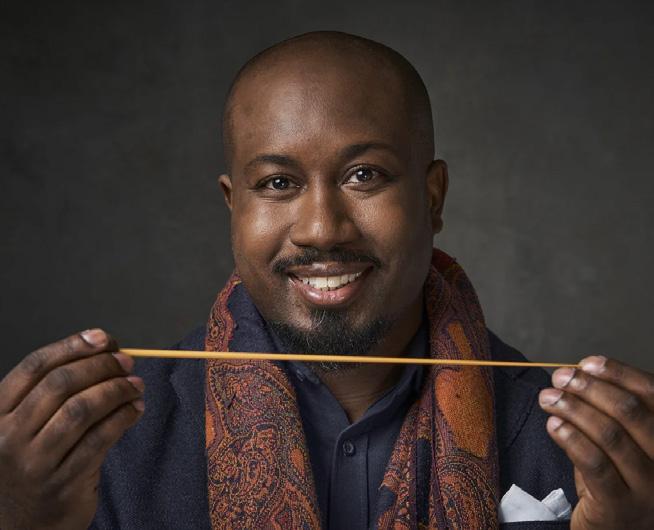
Scotland-based American conductor Kellen Gray has earned a reputation as a versatile and imaginative artist, celebrated for his diverse array of traditional and experimental programming, thrilling performances, and provocative multimedia concert experience curation.
Since the end of 2023, he serves as associate artist of the Royal Scottish National Orchestra, a newly created role that sees him conduct, curate, and present programs across the RSNO’s series offerings, following his highly successful tenure as the orchestra’s assistant conductor (2021–23).
Kellen credits the many folk music styles of the southeastern United States as his earliest and most impactful musical influences, and his repertoire interests to date have been fuelled by the engaged pursuit of that same spirit of cultural authenticity. This has led to a particular mastery not only of works that incorporate American folk idioms, but also in-depth explorations of heavily folkinspired European composers such as Béla Bartók, Manuel de Falla, and Ralph Vaughan Williams, among others.
A passionate champion for African-diasporic composers, Kellen was the founder and curator of the Charleston Symphony’s Project Aurora: a programming and performance initiative aiming to illustrate the importance of African-American arts and culture as equally valuable to its European equivalent. Additionally, he serves as assistant editor and conductor liaison for the African Diaspora Music Project, after extensive research at The Center for Black Music Research (CBMR) at Columbia College Chicago.
Kellen’s discography to date comprises two celebrated releases—African American Voices and African American Voices II, made with the Royal Scottish National Orchestra—showcasing music by Margaret Bonds, William Dawson, William Grant Still, Coleridge Taylor Perkinson, Florence Price, and George Walker.
Previous positions in Kellen’s formative years as a conductor included successful tenures with the Charleston Symphony Orchestra (associate conductor, 2018–23), Chicago Sinfonietta (conducting fellow and assistant conductor, 2016–18), and Valdosta Symphony Orchestra (assistant conductor, 2014–16).
Recent and forthcoming guest conducting highlights include engagements with such orchestras as the Baltimore Symphony Orchestra, Minnesota Orchestra, National Symphony Orchestra (Washington), Oregon Mozart Players, Philharmonia Orchestra (London), Pittsburgh Symphony Orchestra, and the Seattle Opera, among others.

Ain’t No Mountain High Enough: The Music of Motown



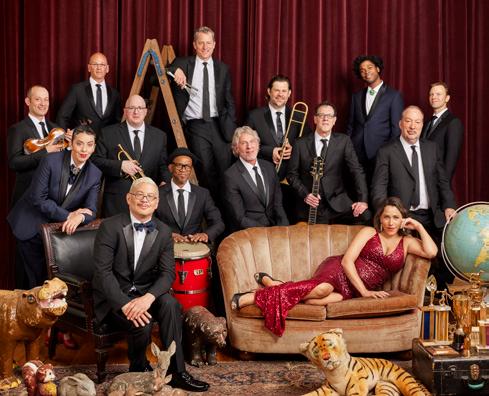

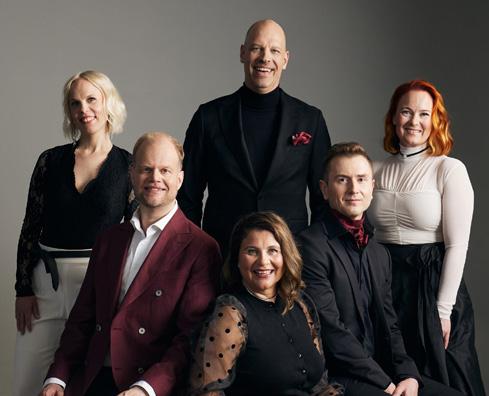


Featured Program
Gonzalo Farias, conductor
*Blake Pouliot, violin
0:05 STILL – Summerland
0:34 TCHAIKOVSKY – Violin Concerto in D major, Opus 35
I. Allegro moderato
II. Canzonetta: Andante—
III. Finale: Allegro vivacissimo
INTERMISSION
0:44 TCHAIKOVSKY – Symphony No. 5 in E minor, Opus 64, Th 29
I. Andante—Allegro con anima
II. Andante cantabile con alcuna licenza
III. Valse: Allegro moderato
IV. Finale: Andante maestoso—Allegro vivace
*Houston Symphony debut

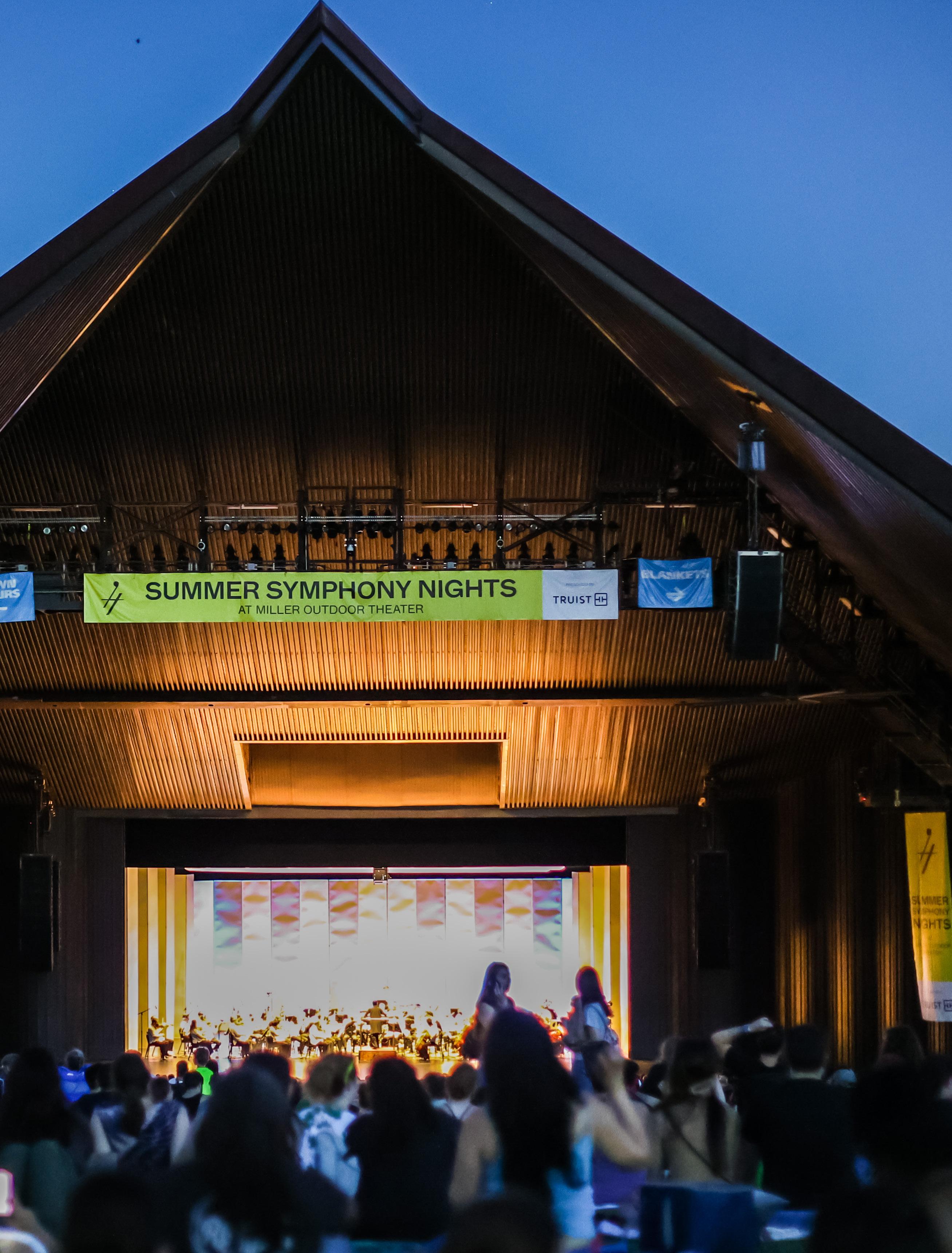
Saturday, July 13

City of Houston through the Miller Theatre Advisory Board Guarantor
The Houston Symphony's Miller Outdoor Theatre concerts are endowed by The Brown Foundation, Inc. in memory of Stewart and Hanni Orton
The Houston Symphony's sound shell ceiling is made possible through the generosity of the Beauchamp Foundation and the Fondren Foundation
Miller Outdoor Theatre
8:35 p.m.
Tonight’s program brings together two of the most popular works by the Russian composer Piotr Ilyich Tchaikovsky with a winsome, expressive piece by one of America’s most important artistic figures. William Grant Still, the grandson of former slaves, was known in his day as the “Dean of Afro-American Composers.” He was especially adept at large compositional forms, producing five symphonies, nine operas, four ballets, and numerous other orchestral pieces. Still originally composed Summerland for solo piano. But the beauty of this blissful evocation of heaven soon prompted a variety of arrangements for chamber players and orchestra.
Decades earlier, Tchaikovsky had established himself as a master of lyrical styles and larger forms, his sprawling canon, including seven symphonies and 11 operas—not to mention three ballets that became household names around the world. His Violin Concerto in D major, completed in 1881, was at first not especially well received. But in time, the work’s lyrical, rustic, and athletic qualities made it not only one of Tchaikovsky’s most popular works, but also one of the most beloved of all violin concertos.
Tchaikovsky’s Symphony No. 5 in E minor, composed in 1888, likewise attracted hostile views in its day, despite the composer’s use of a strong, memorable motto that he repeats in varying ways throughout the work, giving the symphony an unusual sense of dramatic cohesiveness. Over time, it, too, emerged as one of the composer’s most admired works for its passionate character and elegant orchestration. —Steven Smith
Summerland (1936)
TCHAIKOVSKY
Violin Concerto in D major, Opus 35 (1878)
Born in 1895 in Woodville, Mississippi, to college-educated teachers whose own parents had been slaves, William Grant Still would over time become one of America’s most prolific and consequential artists. Widely known as the “Dean of Afro-American Composers,” Still completed nearly 200 works during his lifetime, including five symphonies and nine operas.
Still studied music independently at first while enrolled in Wilberforce University for premedical studies, taking as his earliest role model the successful Afro-English composer Samuel Coleridge-Taylor. He left school to work with the popular composer W.C. Handy, who published Still’s early songs and arrangements, and gave him an appreciation for the vernacular blues tradition. An inheritance enabled him to attend Oberlin College, where he studied theory and counterpoint.
After spending a year in the U.S. Navy during World War I, Still resumed his studies until Handy lured him to New York, where he worked as an arranger and wrote popular songs under a pseudonym, Willy S. Grant. Yet even as a successful songwriter and orchestrator, Still never abandoned his quest to compose concert works, pursuing further studies with the eminent establishment composer George Whitefield Chadwick and the French-American avant-gardist Edgard Varèse.
Summerland, one of Still’s most popular works, originally appeared as the second piece in Three Visions, a triptych for solo piano composed in 1935. According to Judith Anne Still, the composer’s daughter, the tripartite piano work depicted the soul’s journey after death. Summerland, she explained, signifies the heaven that awaits the virtuous, which surely accounts for the sublime radiance in this music.
Still fashioned and published a chamber orchestra arrangement of his piece, which now exists in a variety of versions for duo, wind band, and orchestra with soloist: the surest sign of a work’s genuine popularity.
—Steven Smith
Tchaikovsky wrote his Violin Concerto in March 1878 while staying amid the breathtaking mountains and lakes of Clarens, Switzerland. The work was spurred by a visit from the violinist Josif Kotek, a former lover. After playing through Lalo’s Symphonie espagnole together, Tchaikovsky’s imagination was fired with ideas for a concerto. Work on the concerto progressed quickly; Tchaikovsky would write a passage and Kotek would try it out, giving Tchaikovsky valuable feedback regarding violin technique. The masterpiece that emerged would become one of the most beloved violin concertos in the repertoire.
After a passionate introduction for the orchestra, the soloist introduces one of Tchaikovsky’s most beautiful melodies. Lyrical passages alternate with the soloist’s display, building to a grand return of the main theme in a powerful, heroic guise. The soloist varies and develops the theme
TCHAIKOVSKY
Violin Concerto in D major, Opus 35 (1878)
TCHAIKOVSKY
Symphony No. 5 in E minor, Opus 64, Th 29 (1888)
until it returns in the orchestra. The soloist then plays a cadenza, an unaccompanied solo of great difficulty that features some of the violin’s highest notes. After a reprise of the main themes, the orchestra and soloist race to the end of the movement in a thrilling coda. The slow movement’s title, “Canzonetta,” is Italian for “little song” and indicates a simple, vocal style of music. After a chorale-like introduction from the woodwinds, the soloist indeed plays a simple, song-like melody that is sweet yet melancholy. A warmer, more tender middle section leads to a reprise of the main theme. Just as the second movement is about to fade away, the finale begins with a bang. In place of the noble melodies of the previous movements, Tchaikovsky now turns to the earthy sounds of Russian folk music, casting the soloist as a virtuoso Russian fiddler. Lively, dancing themes alternate with virtuoso passages for the soloist, leading to an exhilarating coda.
Tchaikovsky wanted to dedicate his new concerto to Kotek, but worried that this might invite gossip. Instead, he dedicated it to the famous Hungarian violinist Leopold Auer, who promptly rejected the piece as unplayable. The premiere at last took place in Vienna in 1881, when the violinist Adolph Brodsky decided the concerto was playable after all. Despite enthusiastic applause, the critics were harsh. Eduard Hanslick particularly criticized the finale in his infamous review: “We see plainly the savage, vulgar faces; we hear curses, we smell vodka. […] Tchaikovsky’s Violin Concerto gives us for the first time the hideous notion that there can be music that stinks to the ear.” Fortunately, Hanslick’s opinion didn’t seem to matter, and the concerto was soon established in the repertoire. Possibly wounded by Tchaikovsky’s decision to dedicate the work to another, Kotek would never publically perform the concerto. The relationship between composer and violinist cooled; Tchaikovsky would not see Kotek again until 1884, when he bid him farewell in Davos, Switzerland. Kotek died of tuberculosis a few months later. —Calvin Dotsey
On April 9, 1888, Tchaikovsky wrote to his brother Modest, “in the summer I intend to write a symphony…” Indeed, the composer did complete the symphony, his Fifth, in the following months, albeit with great struggle; he rejected many of his initial sketches as the work developed. Amid these early ideas for the symphony is a tantalizing program for the work:
“Program: 1st movement of symph[ony].
Intr[oduction]. Total submission before fate, or, what is the same thing, the inscrutable designs of Providence. Allegro. 1) Murmurs, doubts, laments, reproaches against... XXX II) Shall I cast myself into the embrace of faith???
A wonderful program, if only it can be fulfilled.”
These words have inspired much speculation, but what Tchaikovsky meant and how this program might relate to the finished symphony (if
Symphony No. 5 in E minor, Opus 64, Th 29 (1888)
at all) are impossible to know. In any case, the music speaks clearly for itself; its allusions to other musical works are particularly revealing. Like Beethoven’s Fifth Symphony, Tchaikovsky’s Fifth follows a per aspera ad astra plan, charting a course from the darkness of E minor to the light of E major. Another similarity between the two symphonies is their martial rhetoric, suggesting a kind of musical war epic. Beethoven was inspired by Homer’s Iliad and the contemporary events of the Napoleonic Wars; if Tchaikovsky’s Fifth has a literary analogue, it might be Tolstoy’s War and Peace (one of the composer’s favorite novels).
Despite these similarities, Tchaikovsky nevertheless put his own stamp on the symphony. In a private letter, Tchaikovsky explained that his Fourth Symphony begins with a musical idea representing fate, an oppressive motif that returns dramatically in the symphony’s otherwise festive finale. In a parallel that fits Tchaikovsky’s aforementioned program, his Fifth Symphony also begins with a fateful musical “motto” that recurs poetically throughout the work.
This time, however, the motto theme plays a different role. An entry on this symphony from John Herbert Clifford’s 1910 Standard Musical Encyclopedia encapsulates Tchaikovsky’s innovation: “The idea is that of a great sorrow turned by some mysterious power to glory and splendor. Throughout the work runs the sad motto theme, breathing shame and sorrow, deepening the gloom of the tragic passages, darkening the sunlight of the brief glimpses of gaiety, yet in the end this very theme, fostered by the secret power of art, becomes transfigured and shines forth in splendor born from itself alone.”
After the motto appears in an introduction, a dark, march-like theme is juxtaposed with a more hopeful, lyrical melody in the stormy first movement. The second movement then begins with a hushed chorus of strings before introducing a second pair of themes: a soulful horn solo leads to a more romantic melody, which in its full form recalls the love theme from Tchaikovsky’s Romeo and Juliet Overture. Just as this passionate theme culminates at the movement’s climax, the motto theme violently interrupts it, perhaps suggesting a love denied by fate. The motto theme assumes a less menacing guise at the end of the third movement, a waltz recalling Tchaikovsky’s ballet music. But the motto is only truly redeemed at the opening of the finale, when it appears in a resplendent E major. After intense struggle, the transformed motto ultimately leads the symphony to a resoundingly triumphant conclusion.
—Calvin Dotsey

An engaging orchestral conductor, award-winning pianist, and passionate educator, Gonzalo Farias is the Assistant Conductor of the Houston Symphony. In an ever-changing world, Gonzalo desires to establish music-making as a way of rethinking our place in society by cultivating respect, trust, and cooperation among all people in our community.
Gonzalo previously served as associate conductor of the Kansas City Symphony, associate conductor of the Jacksonville Symphony, assistant conductor of the Virginia Symphony Orchestra, and conducting fellow at the Baltimore Symphony Orchestra. Praised for his “clear, engaging” style “with a lyrical, almost Zenlike quality,” Gonzalo has been established “as a focused, musical artist who knows what he wants and how to get it—with grace and substance.” As former music director of the Joliet Symphony Orchestra, he embraced the city of Joliet and its Hispanic residents of the greater Chicago area with pre-concert lectures, Latin-based repertoire, and a unique side-byside bilingual narration of Bizet’s Carmen Gonzalo was recently selected to
conduct at the esteemed Bruno Walter National Conductor Preview, the most important showcase for conductors in America. Designed by the League of American Orchestras, the National Conductor Preview chooses the most promising talents in the world for their podium gift and commitment to the future of American orchestras. He was also appointed by the National Endowment for the Arts as a reviewing member for the Grant for Art Projects, judging applications from diverse music institutions to support the latest and most important artistic endeavors in the United States.
During the summers, Gonzalo has worked with Jaap Van Zweden and Johannes Schlaefli at the Gstaad Menuhin Festival in Switzerland as well as with Neeme and Paavo Järvi at the Pärnu Music Festival. In the United States, he was a two-time recipient of the prestigious Bruno Walter Memorial Conducting Scholarship at the Cabrillo Music Festival and named Emergent Conductor by Victor Yampolsky at the Peninsula Music Festival. He also attended the Pierre Monteux Festival, where he received the Bernard Osher Scholar Prize. Out of 566 applicants from 78 countries, he was chosen as one of 24 finalists in the prestigious 2018 Malko Conducting Competition with the Danish National Symphony Orchestra. Hailed by the Gramophone magazine critics, Gonzalo offered one the “most fluent, honest, open-hearted and pointed performances.”
Gonzalo was born in Santiago de Chile, where he began his piano studies at age five. He
earned his bachelor’s degree at the P.C. University of Chile and then continued his graduate piano studies at the New England Conservatory as a full-scholarship student of Wha-Kyung Byun and Russell Sherman. He won first prize at the Claudio Arrau International Piano Competition and prizes at the Maria Canals and Luis Sigall Piano Competitions. As a conductor, he attended the University of Illinois working with Donald Schleicher, the Peabody Conservatory with Marin Alsop, and worked privately with Larry Rachleff and Otto-Werner Mueller. Besides having a fond love for piano, chamber, and contemporary music, Gonzalo is a passionate supporter of second-order cybernetics to help understand communication and how complex systems organize, coordinate, and interconnect with one another. This includes the interdependent and recursive nature of musical experiences in which performers and audiences alike interact, respond, and co-create each other’s space. His final doctoral thesis, "Logical Predictions and Cybernetics," explores the case of Cornelius Cardew’s “The Great Learning” to redefine music activity as a self-organized organization. In addition, he has a warm affection for his formal studies of Zen Buddhism, which has been a major influence on his approach to music and life.
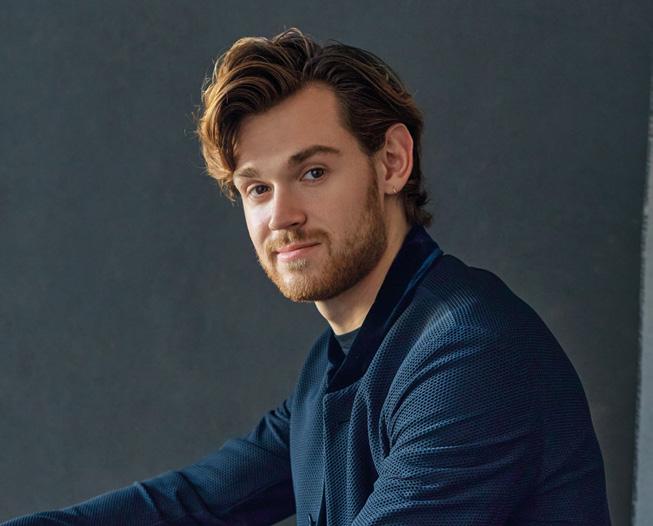
Blake Pouliot, violin
Described as “immaculate, at once refined and impassioned,” ( ArtsAtlanta) violinist Blake Pouliot (pool-YACHT) has anchored himself among the ranks of classical phenoms. A tenacious young artist with a passion that enraptures his audiences, he has established himself as “one of those special talents that comes along once in a lifetime” (Toronto Star).
Blake’s 2023–24 symphonic highlights included Shostakovich 1, Bruch 1, Tchaikovsky, Korngold, and Sibelius concerti across North America. This season, he makes his debut with the Philharmonic Orchestra of Spain at the Teatro Monumental in Madrid, performing the Tchaikovsky concerto, and he will play-direct Piazzolla’s The Four Seasons in a separate chamber program.
During his time as soloistin-residence of Orchestre Métropolitain in 2020–21, Blake and Yannick Nézet-Séguin performed Mozart’s Violin Concerto No. 5 and Piazzolla’s The Four Seasons, which led to Blake’s 2022 debut with the Philadelphia Orchestra, performing John Corigliano’s The Red Violin Highlights elsewhere include Beethoven’s Triple Concerto
with Orchestre Symphonique de Montréal in 2022–23 as well as performances of the Paganini, Mendelssohn, Saint-Saëns concerti, and Bruch’s Scottish Fantasy in subscription series across North America. He is also an active chamber musician.
Blake released his debut album of 20 th-century French music on Analekta Records in 2019. Featuring Ravel’s Tzigane and Violin Sonata in G, Debussy’s Violin Sonata in G minor and Beau Soir, the recording received critical acclaim, including a five-star rating from BBC Music Magazine and a 2019 Juno Award nomination for Best Classical Album.
Since his orchestral debut at age 11, Blake has performed with leading international orchestras. He was the featured soloist for the first joint tour of the European Union Youth Orchestra and National Youth Orchestra of Canada.
He has twice been featured on Rob Kapilow’s What Makes It Great? series and has been NPR’s Performance Today artist-inresidence in Minnesota, Hawaii, and across Europe. Previously, he won the grand prize at the 2016 Orchestre Symphonique de Montréal Manulife Competition and was named first laureate of the 2018 and 2015 Canada Council for the Arts Musical Instrument Bank.
Blake performs on the 1729 Guarneri del Gesù on generous loan from an anonymous donor.
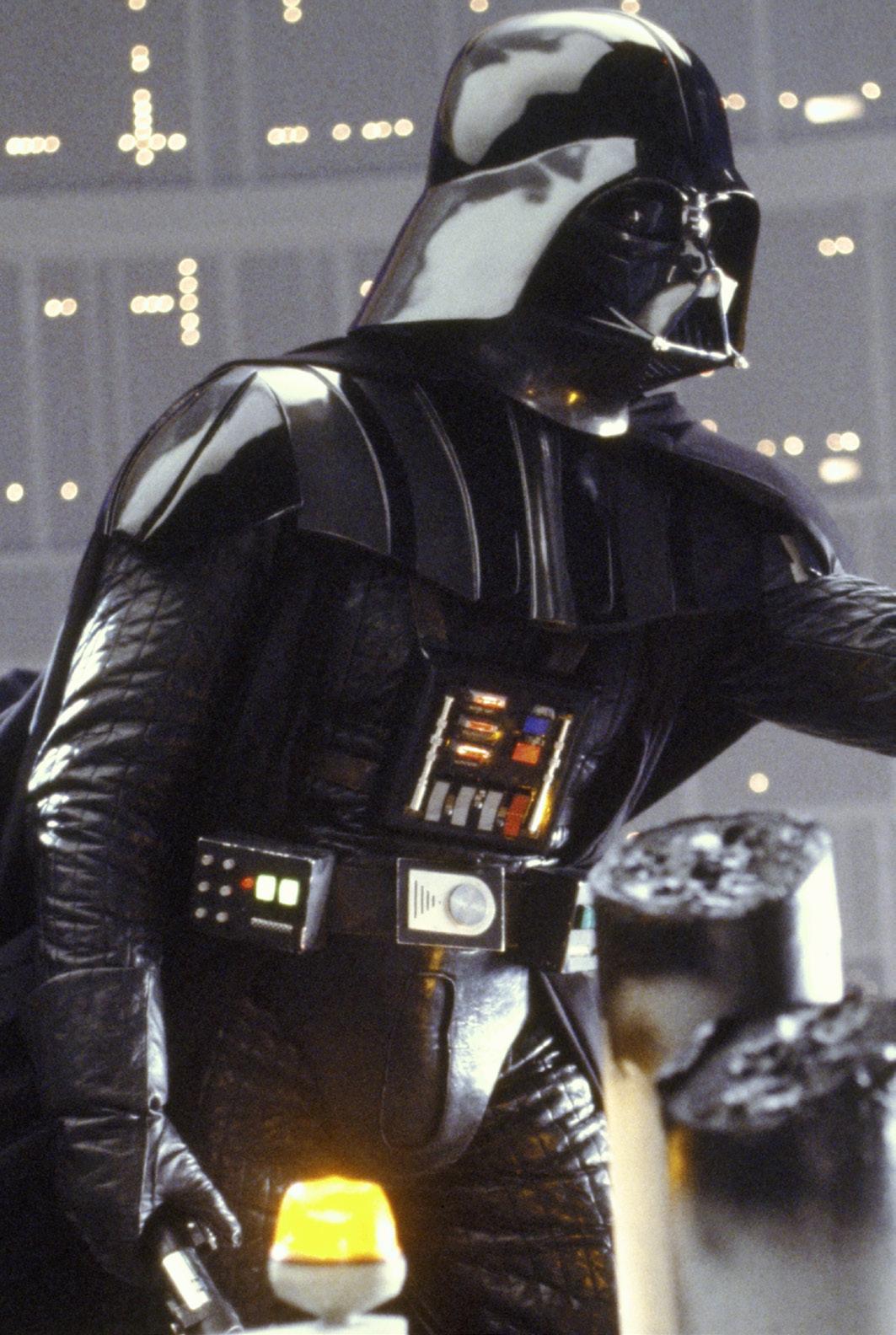
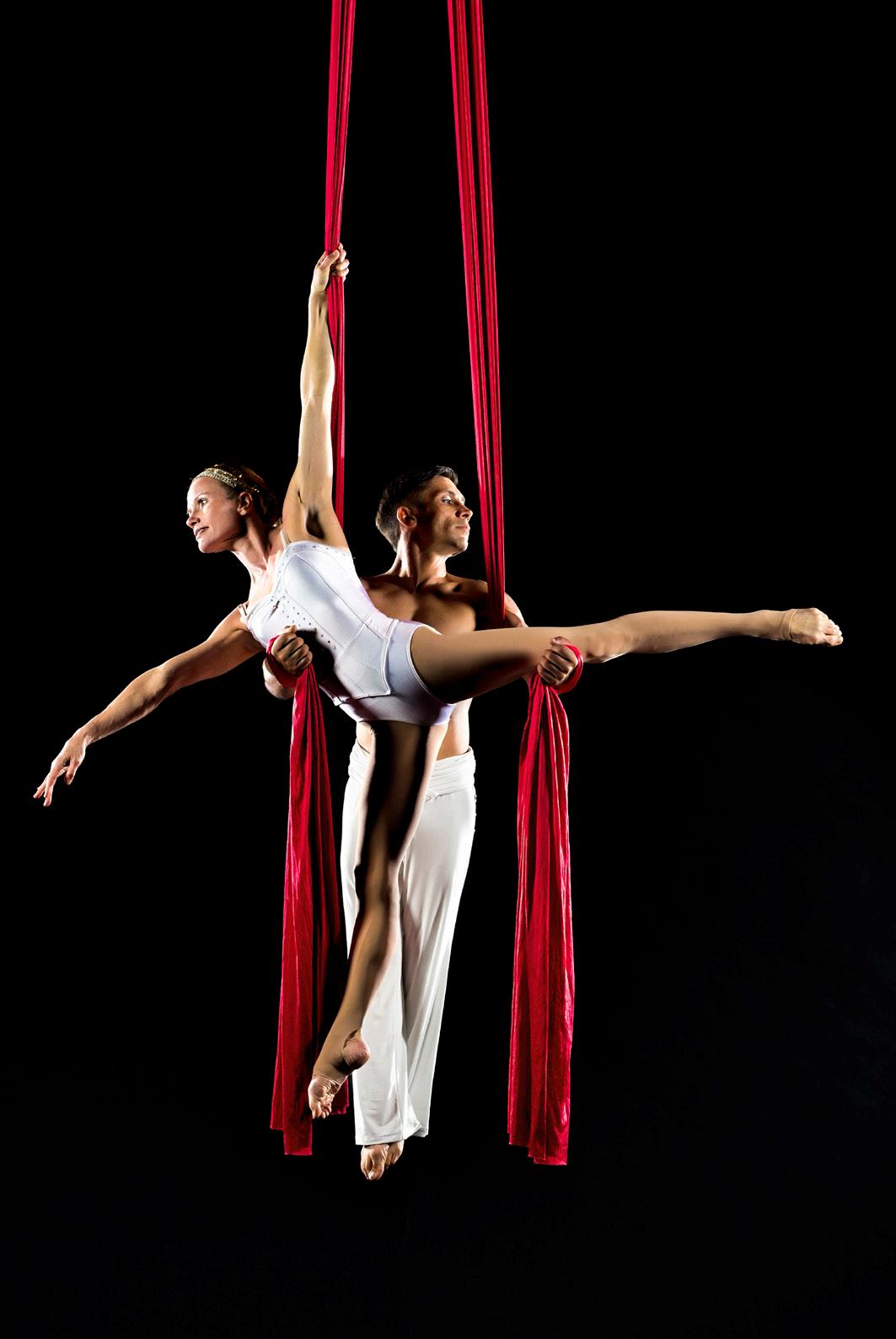
Feb. 21 & 22, 2025 |
Experience the ultimate surround sound as you watch The Empire Strikes Back on the giant screen at Jones Hall, with John Williams’s unforgettable score performed live by the Houston Symphony.

April 25, 26 & 27, 2025 |
Witness breathtaking feats by the world’s greatest Cirque artists, paired with iconic classic rock anthems by Journey, Heart, Styx, The Eagles, Aerosmith, and more.

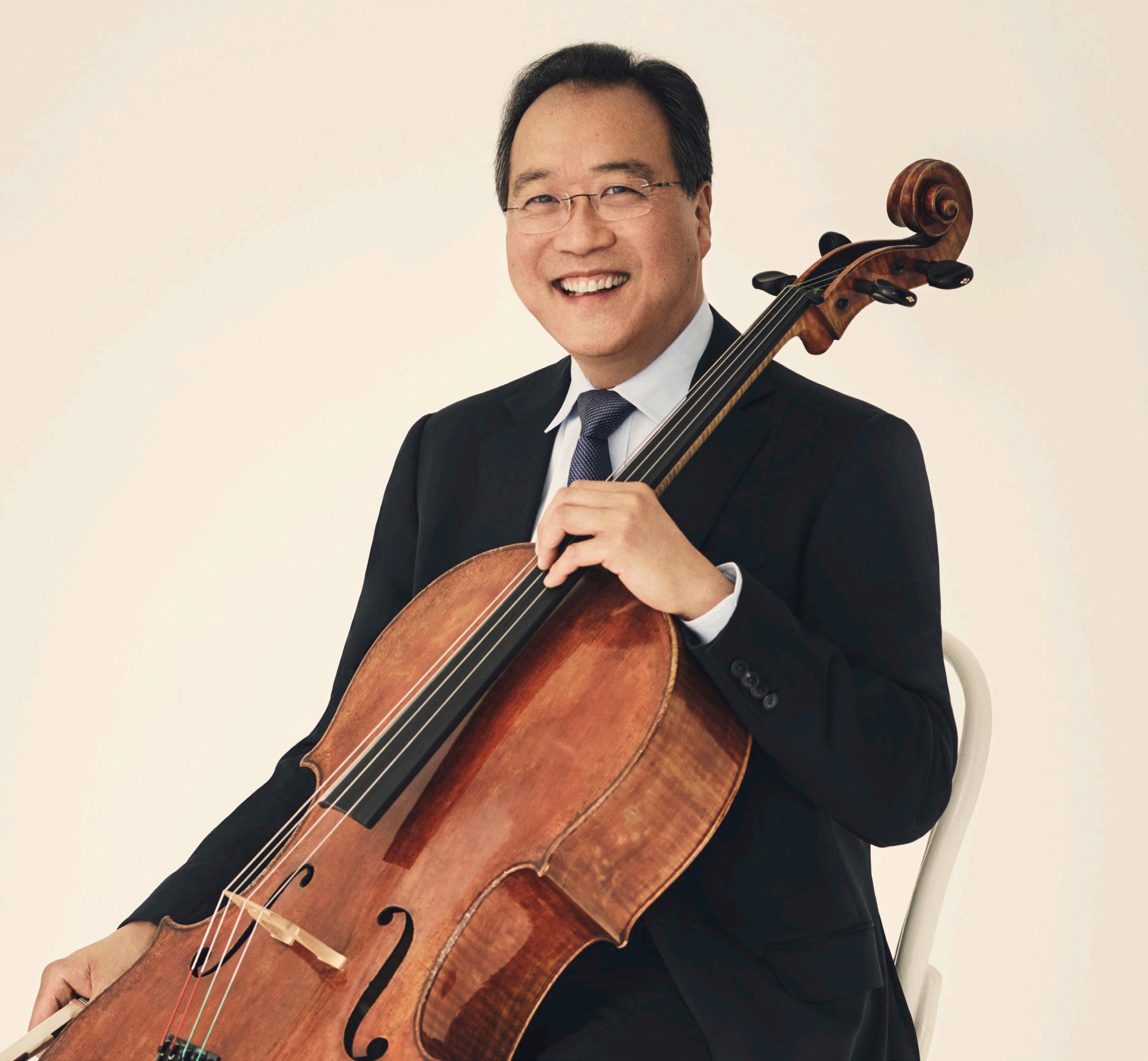
December 9 | Jones Hall Subscribe
